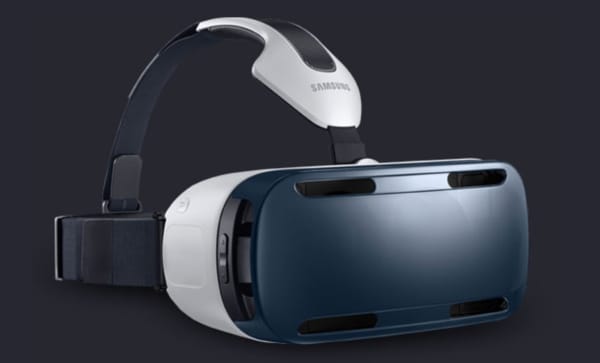Critical kit: Samsung Gear VR

The Oculus Rift virtual reality (VR) device was one of the biggest success stories of Kickstarter in recent years. The Rift isn’t yet available for consumers of course, but other companies have entered the arena with a variety of hi-tech viewers, notably Samsung’s Gear VR which is the first consumer-ready VR product that you can actually buy today. For anyone who is interested in new tech, gadgets, or just wants to experience virtual reality, the Gear VR is arguably a critical piece of kit.
The Gear VR has been designed with Oculus, and uses the same basic technology. However the difference is that the headset uses a Samsung Galaxy Note (or a Galaxy S6 / Edge) instead of its display.
Samsung pretty much beat everyone else to market with the Gear VR, and was the first company to use a mobile device. The headset is fairly inexpensive – the UK price is a little over £120, but of course there’s the added expense of a £500 smartphone in order to use it. And even though the headset might not make virtual reality more easy to use, it has certainly made it more accessible to regular consumers.
Gear VR design and interaction
The device itself resembles a cross between the Oculus Rift and Google Cardboard. The unit has a plastic casing, with an elastic strap on the back that fits snugly on the wearer’s head.
To control the Gear VR, there is a touch pad and a back button located on the side, but it’s also possible to use a special Android controller. Using the touchpad is simple enough to control menus and interact with the various games, but a controller really is essential to get the most out of it.
Samsung’s screen technology and prowess with the Note 4 (a 2,560 x 1,400 pixel OLED display) provides a rich and detailed image, coupled with a Qualcomm Snapdragon CPU, making a fairly powerful system for running all kinds of virtual reality games and apps.
The phone’s is used to great effect – two halves of the screen are used that appear as a 3D image when viewing the display through the lenses. It’s amazing stuff but of course there are still some limitations – resolution and lag is good but it’s important to remember that all this is running off a smartphone that wasn’t designed for virtual reality. So right now, even though virtual reality as offered by the Gear VR is an impressive and extremely immersive experience, it’s still not really quite there yet – future devices like the Rift will no doubt improve upon the inherent design limitations and offer more powerful hardware.
Games
Most people seem to agree that at least as far as consumers are concerned, games and apps are one of its most promising areas. Samsung already offers a decent selection of games and other ‘experiences’, and the choices on offer are growing steadily.
While viewing the Gear VR user interface, there is a Home menu, a Library of existing titles and the store. Recent apps appear on the home screen, and all previous downloads appear in the Library. Moving around between the menus is also fairly intuitive – just move your head and just press on the touchpad. It works so well that you don’t actually need to remove the Note while using the device (as you’d expect).
There are already some great games available for the Gear VR – some are free, and many require the controller (which is an optional add-on) to play effectively.
Most of the titles to date are fairly small, limited experiences; the kind of games that you’d play once in a while to demonstrate just how cool virtual reality is, but there aren’t really many that you would play time and time again. With a much wider selection of games and other apps in future, that’s sure to improve as time goes on.
Today of course, virtual reality has had something of a renaissance with plethora of new products on the horizon – the aforementioned Oculus Rift, as well as headsets from the likes of HTC and Sony. As virtual reality products improve and become more mainstream, the challenges will be to develop compelling apps and software titles that do more than just look good. The user interface and novel methods of interaction will be key, but the way things are progressing it’s just a matter of time before VR does finally come of age.
Mobile Industry Review recently spoke with Professor Roy Kalawsky, Director of the Advanced VR Research Centre at Loughborough University, and is one of the foremost experts in virtual reality.
I’ve been keeping a close eye on VR developments. Whilst the press seem to think a new revolution is taking place many of us were working with similar if not better systems 25 plus years ago. However, the big difference today is the cost – the cost has fallen dramatically now making the technology accessible to the hobbyist. Also, some of the peripheral technology has come on a long way such as tracking systems – e.g. Microsoft Kinect, Leap Motion and many others. Again the cost has fallen beyond what we could have predicted. The resolution of the display devices has really improved but has some way to go in terms of integration the optics to provide a truely immersive experience. The biggest and most impressive development has been in the area of graphics engines – the performance today far exceeds what we used to have to spend over a £1m for a mere fraction of the price. I really think VR is being reborn with massive potential for the future.
Our very own Ewan will be taking part in a special virtual reality-themed 361 degrees podcast in the near future, so look out for more great discussion and debate from the team coming soon.






